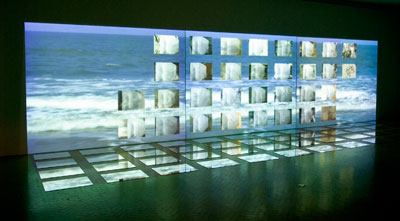
INDIA: Public Places, Private Spaces was organized by The Newark Museum. The exhibition was co-curated by independent curator and art critic Gayatri Sinha, who is based in New Delhi, and Paul Sternberger, Associate Professor of Art History at Rutgers, The State University of New Jersey.
This exhibition presents contemporary Indian photography and video art of the last quarter century, ranging from straightforward photojournalism to highly contrived personal expressions. The twenty-eight artists included in this exhibition provide rich insights into the dynamics shaping the contemporary Indian psyche and social sphere, including deeply rooted cultural practices, dramatic economic and political shifts and the pervasive influence of the media. As they use their cameras to observe, analyze, interpret and subvert, these artists traverse many realms of experience, from the inescapable shared spectacle of the worlds of politics and Bollywood to the enigmatic territory of the artists' imagination. They investigate identity as a social construct, engage issues of gender and sexuality, and explore the effects of population migrations. As a result, the lens moves from the street to the home and from the body politic to the body of the artist.
Increasingly, Indian photographers and video artists insist that their work be more than simply a visual record that mirrors an easily discernable world. They have found more subjective ways to engage the Indian and global social domains, often performing for the camera and constructing narratives. With insight and poignancy, honesty and audacity, humor and irony, these artists create works with many levels of meaning. They encourage us to look beyond the surface, and to consider India anew.
Image
Navjot Altaf
Lacuna in Testimony, 2003
Three-channel video installation with 72 mirrors
Courtesy of the artist
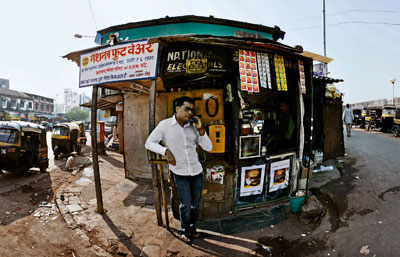
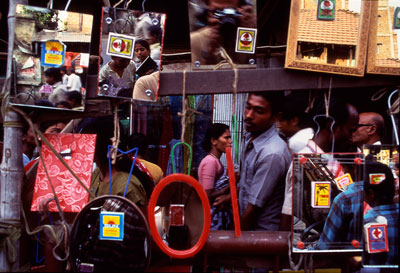
Street photography in India reached maturity by the 1980s. Indian photographers captured their social landscape with a skillful sense of timing and composition. With clever insight, and at times with wry wit, contemporary street photographers continue to make ironic contrasts between the inflections of sudden social upheaval and the rhythms of everyday life. Their views of the monumental and the incidental within Indian life are equally striking, creating a uniquely humanized understanding of even the most momentous historical events.
Some of these street photographers are especially attuned to both the subject of their pictures and the structure of their compositions, creating complex layers of pictorial space through reflections and juxtapositions of interior and exterior.
Top image
Jitish Kallat
Artist Making Local Call (detail), 2005
Digital print on vinyl mesh
Courtesy of the artist
Bottom image
Raghubir Singh
Pavement Mirror Shop, Howrah, West Bengal, 1991
Color photograph
© Succession Raghubir Singh
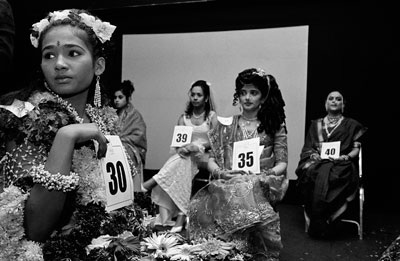
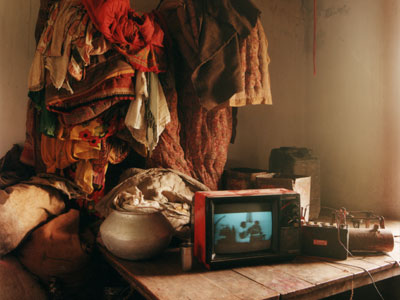
Many artists explore the way Indian popular culture—in the form of media images in film, advertising, and television—shapes identity and permeates people’s private lives. For example, some artists examine the interplay of Bollywood, the beauty industry, and the tinsel promise of fame as it extends into the lives of ordinary people.
More and more Indian artists include images of themselves in their work. Rather than using their cameras simply to record the world as they find it, these artists construct narratives, play roles, and perform for the camera. Cultural imperialism, patriarchy, gender, and sexuality all become topics of investigation as the artists step in front of the camera and become not just makers of images, but part of the image themselves.
Top image
Rajesh Vora
Look of the Year Contest, Mumbai, 1998
Black and white photograph
Courtesy of the artist
Bottom image
Samar and Vijay Jodha
Farmer's House from Through the Looking Glass: Television & Popular Culture in South Asia (detail), 2002
20 digitally projected photographs
Courtesy of the artists
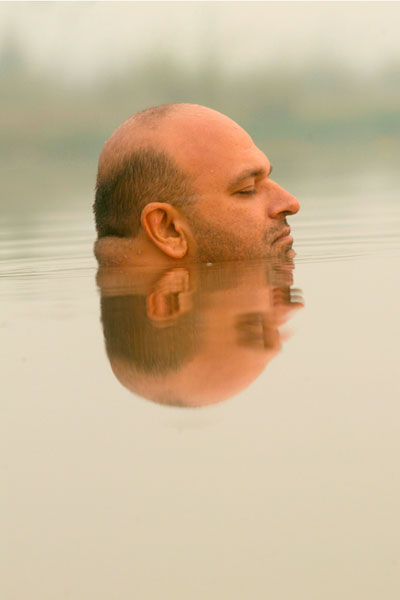
For contemporary Indian photographers and video artists, self exploration of the subjective world can be deadly serious or whimsical and playful. They draw upon sources such as classical writing, family photo archives, personalized rituals, and competing experiences of urban and rural India.
In the hands of some artists, photography and video can be highly personal means of expression. For these artists, the camera serves as a tool for investigating the intimacies of memory, desire, and spirituality. Often this subjective expression does not aspire to legibility; instead it remains evocative and open-ended.
Image
Atul Bhalla
I Was Not Waving But Drowning II, 2005
Series of 14 photographs
Courtesy of the artist
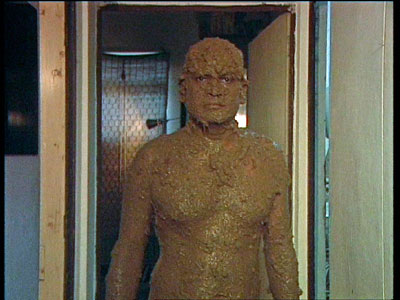
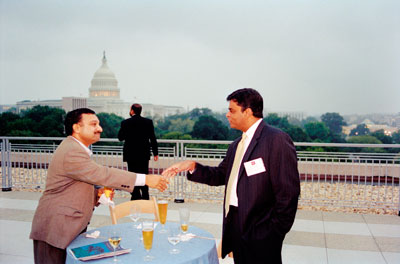
Photographers have used varied means to examine cross-cultural experiences in India and abroad. These strategies include relatively straightforward photo essays on Indians abroad who struggle to reconcile competing cultural traditions and values. Other artists prefer to construct and perform, using performance and self-portraiture to address national and racial identity. Still others explore deeply private realms of interpersonal relationships, sexuality, and AIDS. As a whole, the work of these artists sets up a dialogue between entrenched values and shifting global identities.
Top image
Subodh Gupta
Pure, 2000
Single-channel video
Courtesy of the artist
Bottom image
Gauri Gill
Party for Indian Entrepreneurs, Washington DC, 2002
Color photograph, from the series The Americans
Courtesy of the artist
